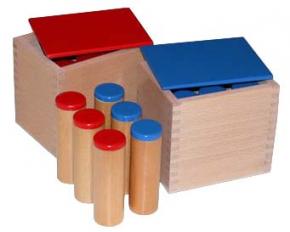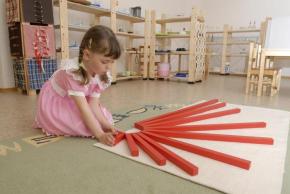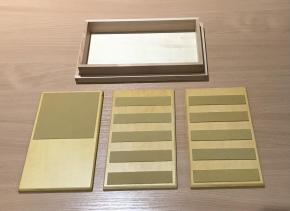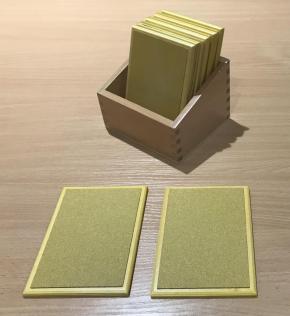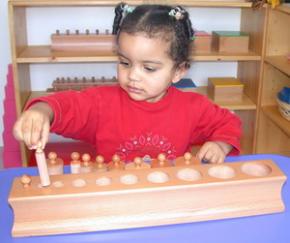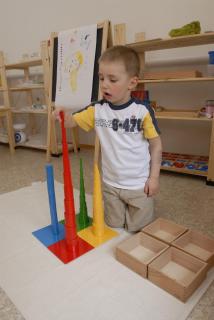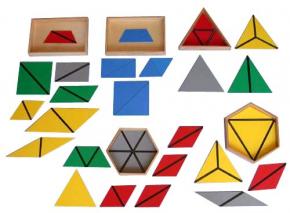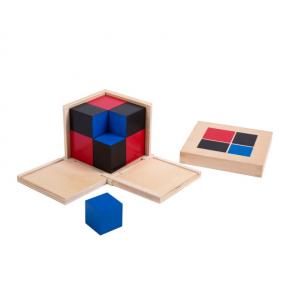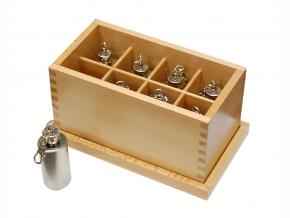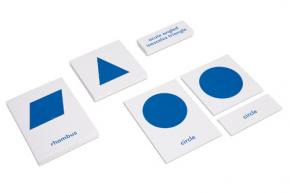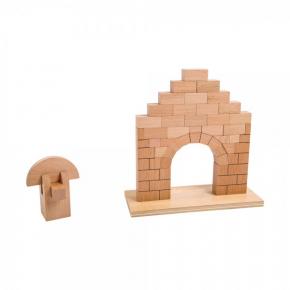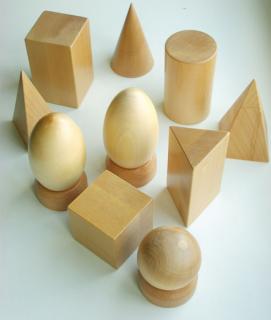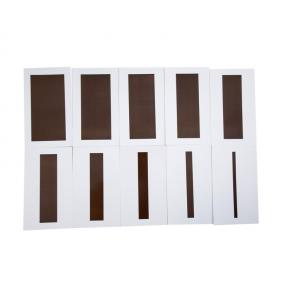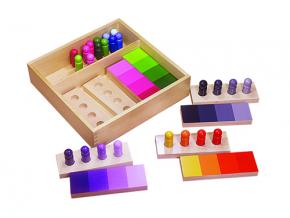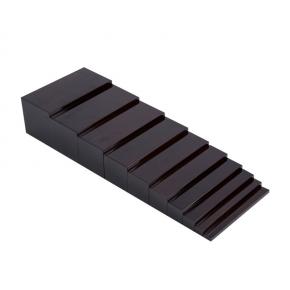
As the child settles into the cycle of work and shows the ability to focus on self-selected activities, the teacher will introduce the sensorial materials.
The key feature of the Sensorial Materials is that each isolates just one concept for the child to focus on. The Pink Tower, for example, consists of ten cubes which differ only in their dimensions, the smallest being 1 cm3, the largest 10 cm3. In building the tower the child’s attention is being focused solely on the regular decrease in volume of successive cubes. There are no additional cues-different colors for example, or numbers written onto the faces of the cube-which might help the child to sequence the cubes accurately.
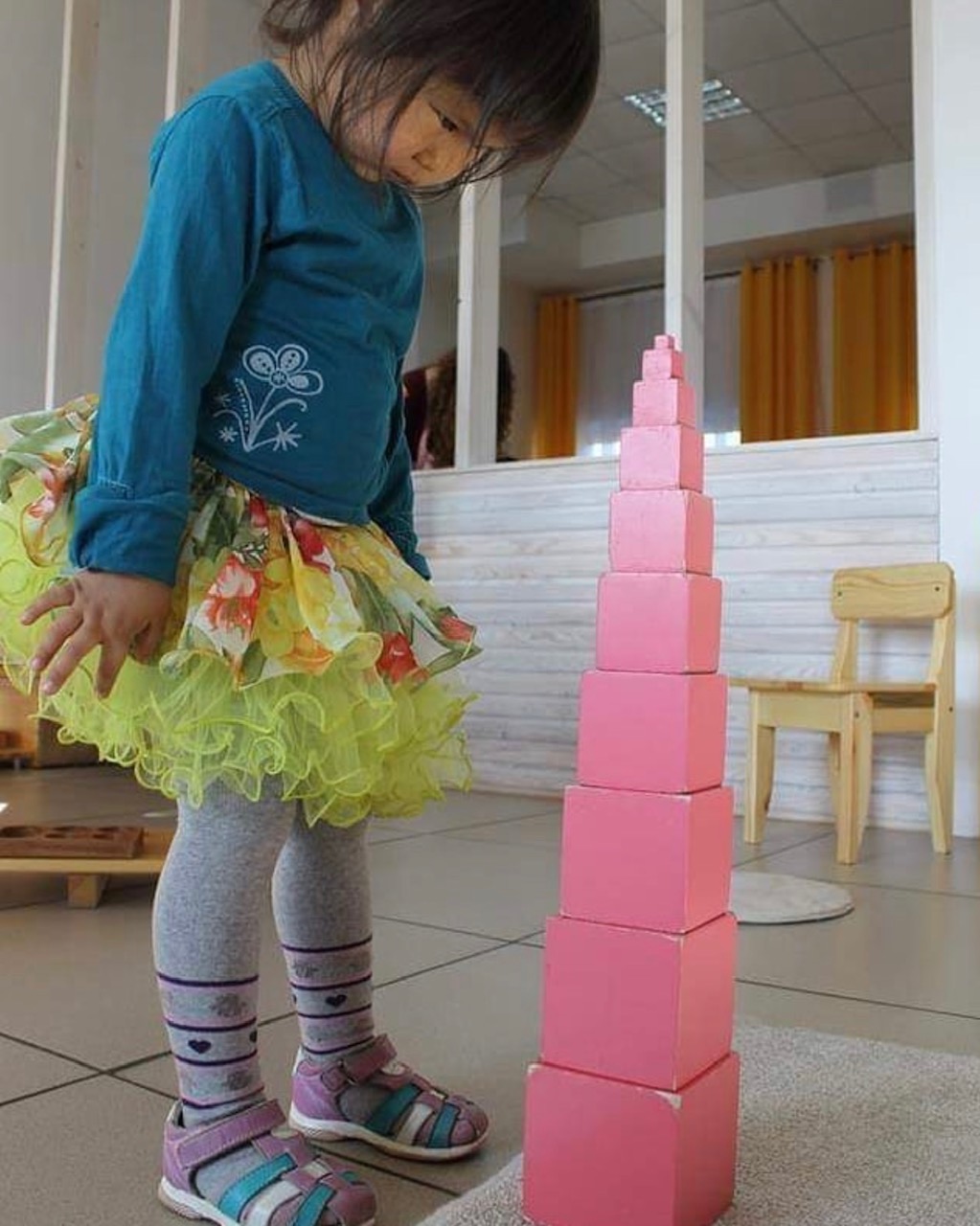
Another piece of Sensorial Material, the Sound Boxes, contains six pairs of closed cylinders that vary in sound from soft to loud when shaken, and the task for the child is to find the matching pairs. Again, there is only one cue that the child can use to do this task: sound.
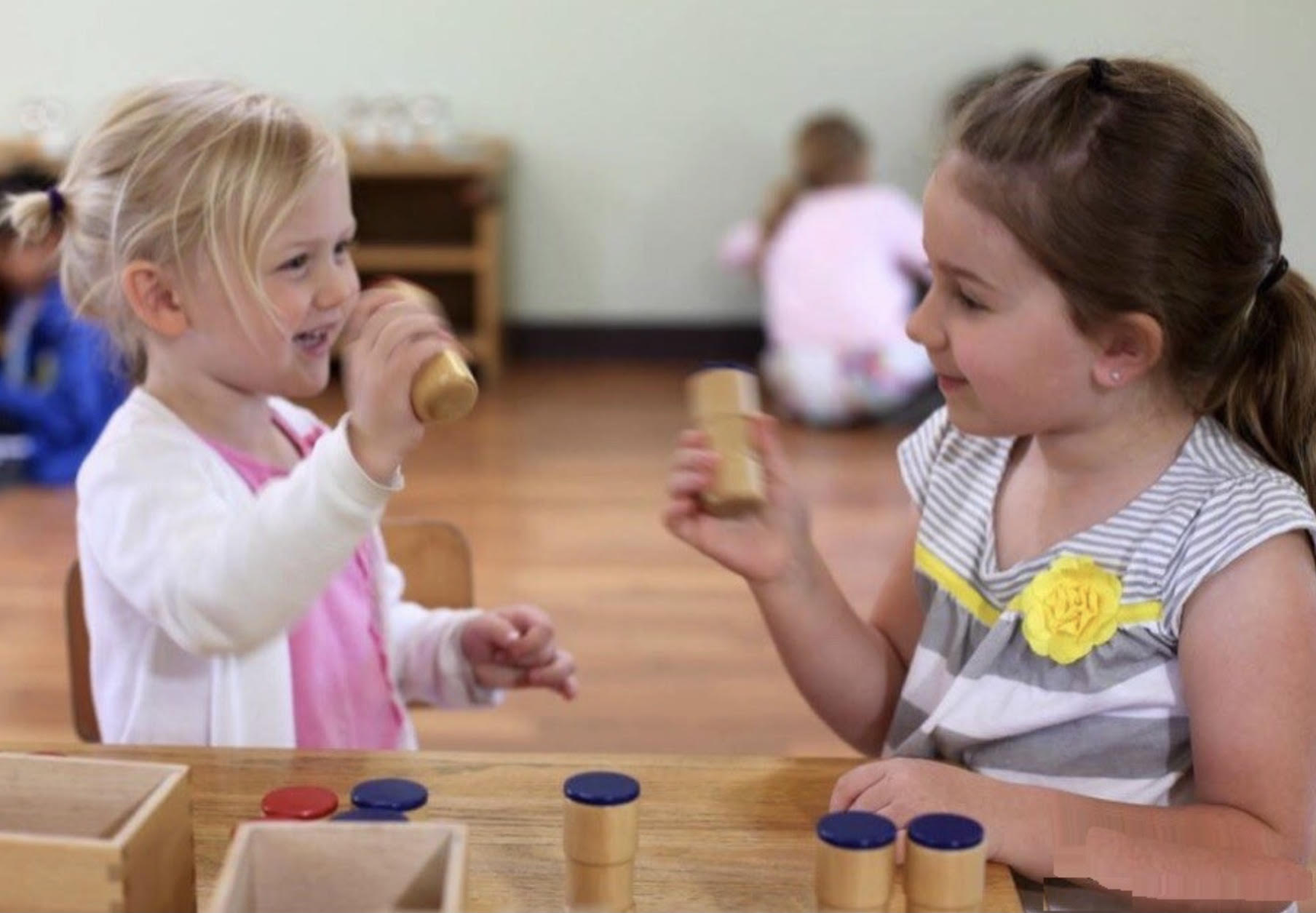
The aim of the Sensorial Materials is not to bombard the child’s senses with stimuli; on the contrary, they are tools designed for enabling the child to classify and put names to the stimuli that he will encounter on an everyday basis.
The Sensorial Materials, are, furthermore, designed as preparation for academic subjects. The long rods, which comprise ten red rods varying solely in length in 10 cm increments from 10 cm to 1 m, have an equivalent in the mathematics materials: the number rods, where the rods are divided into alternating 10 cm sections of red and blue so that they take on the numerical values 1–10. The touch boards, which consist of alternate strips of sandpaper and smooth paper for the child to feel, are preparation for the sandpaper globe in geography, a globe where the land masses are made of rough sandpaper but the oceans and seas are smooth. The touch boards are also preparation for the sandpaper letters in literacy and sandpaper numerals in mathematics, which the child learns to trace with his index and middle fingers.
Source: National Library of Medicine


